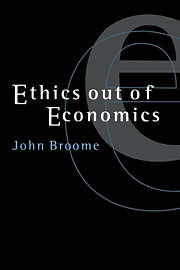Book contents
12 - Structured and unstructured valuation
Published online by Cambridge University Press: 12 November 2009
Summary
Introduction and an example
Economists can value things for cost–benefit analysis in two different ways: they can adopt either a structured or an unstructured approach. In this chapter I shall first explain the difference. Then I shall examine the relative merits of each. One conclusion I shall draw is that we need to distinguish two different aims that cost–benefit analysis could pursue: it could aim to discover what ought to be done, or alternatively it could aim to discover what would be the best thing to do. These are not necessarily the same. I shall argue in favour of the latter. I shall support the structured approach to valuation, because it turns out to be appropriate for this latter aim.
As an example, I shall concentrate on valuing human life. To value life, some economists adopt a structured approach and others an unstructured approach, so this application illustrates the distinction nicely. A classic cost–benefit problem involving life and death is the question of how much it is worth spending on roads to make them safer. If more money is spent on safety, the benefit will be that some people who would have died on the roads will be saved. But if this money is not spent on safety, it will be available for other uses, which will benefit people in other ways. The problem of road safety is a matter of balancing one sort of benefit against the other.
A very schematic version of the problem is illustrated in figure 12.1. The figure is divided into two halves. The left half (A) represents the option of spending on safety; the right half (B) the option of not spending on safety.
- Type
- Chapter
- Information
- Ethics out of Economics , pp. 183 - 195Publisher: Cambridge University PressPrint publication year: 1999



